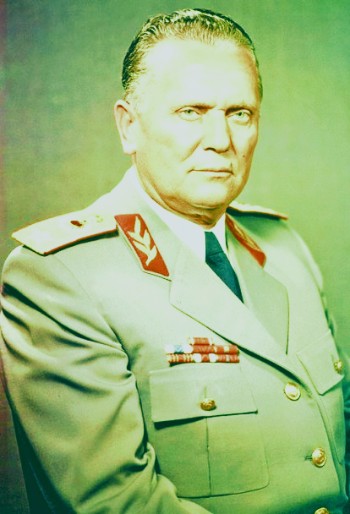Josip Broz Tito was the president of Yugoslavia and a communist revolutionary. Born on May 07, 1892 in Croatia to Franjo and Marija Broz, young Josip completed his primary education in 1905 and two years later, he shifted to Sisak to train as a locksmith’s apprentice.
After completing his training, he joined the Social Democratic Party of Croatia and Slavonia. However, in 1913, he was drafted into the Austro- Hungarian Army. After taking non-commissioned training, he was enrolled as a sergeant in the war against Serbia in 1914.
Within a year, Tito was promoted to sergeant major for his heroic acts. In 1915, he was sent to the Russian front, where he fought bravely before being caught by the Russian army. However, he was freed in 1917 when revolting workers broke into the prison.
On returning to Yugoslavia, he joined the Communist Party, which won the elections by 59 seats. However, the government banned communist activities and so; Tito had to move to Veliko Trojstvo.
In 1928, he was elected as the secretary of the Zagreb branch of the Metal Workers Union of the CPY (Communist Party of Yugoslavia). Assuming the post, Tito carried out many anti government activities in the form of street demonstrations and much more. As a result, he was arrested and sentenced to five years in prison. During his prison sentence, he met Mosa Pijade, who later became his role model. After leaving prison, he moved to Vienna and became a member of the CPY Politburo.
From 1935 to 1936, Tito worked under the orders of CPY Secretary General Milan Gorkic in the Soviet Union. During his rule, CPY gained attention and became increasingly powerful. However, Gorkic died in 1937 and Tito was appointed as CPY general secretary in 1939.
When the Germen invasion took place it was only CPY that stood strong and asked the people to reunite and fight against it. Tito established a military committee within CPY; he was the commander-in-chief. Later, treaty was signed, which led to the merger of CPY and King Peter’s II government in exile. Soon after, Tito was appointed as the prime minister of Yugoslavia and the commander-in-chief of Yugoslavia’s forces. In October 1944, the Soviet army, with the help of Tito, liberated Serbia, and by 1945, the Communist Party emerged as the only controller of Yugoslavia.
Tito believed that he could rule the country by himself, without interference from the Soviet Union, but Stalin disagreed. Stalin strived to eliminate Tito from his role but to no avail.
The rift between the two resulted in the country being cut off from the Soviet Union and other Eastern European nations. After the death of Stalin, Tito sought to strengthen ties with developing countries. He made Yugoslavia one of the founding members of the Non- Alignment Movement and formed strong ties with third world countries.
Tito officially changed the name of the country to the Socialist Federal Republic of Yugoslavia. He brought many changes to the country, giving people right to speech and religious expression. In fact, in 196, he abolished the need for a visa and opened the borders for foreign visitors. He also took and active part in promoting a peaceful resolution for the Israeli-Arab conflict.
In 1971, he was once again elected as the president. Under his rule, the constituent republics were responsible for healthcare, education, and housing, whereas the federal government was responsible for defense, foreign exchange, monetary affairs and internal security. In 1974, he passed a new constitution which made him president for life.
For his outstanding efforts, he received 98 international and 21 national decorations. He also received the French Legion of Honor and National Order of Merit the Soviet Order of Lenin, the British Order of the Bath, the Japanese Order of the Chrysanthemum, the Order of Merit of Italy and the German Federal Cross of Merit.
Tito married thrice in his life and had four children. In 1979, he became increasingly ill.
He breathed his last on May 4, 1980 and he was buried at the House of Flowers, in the museum of Yugoslavia history in Belgrade, Serbia.

